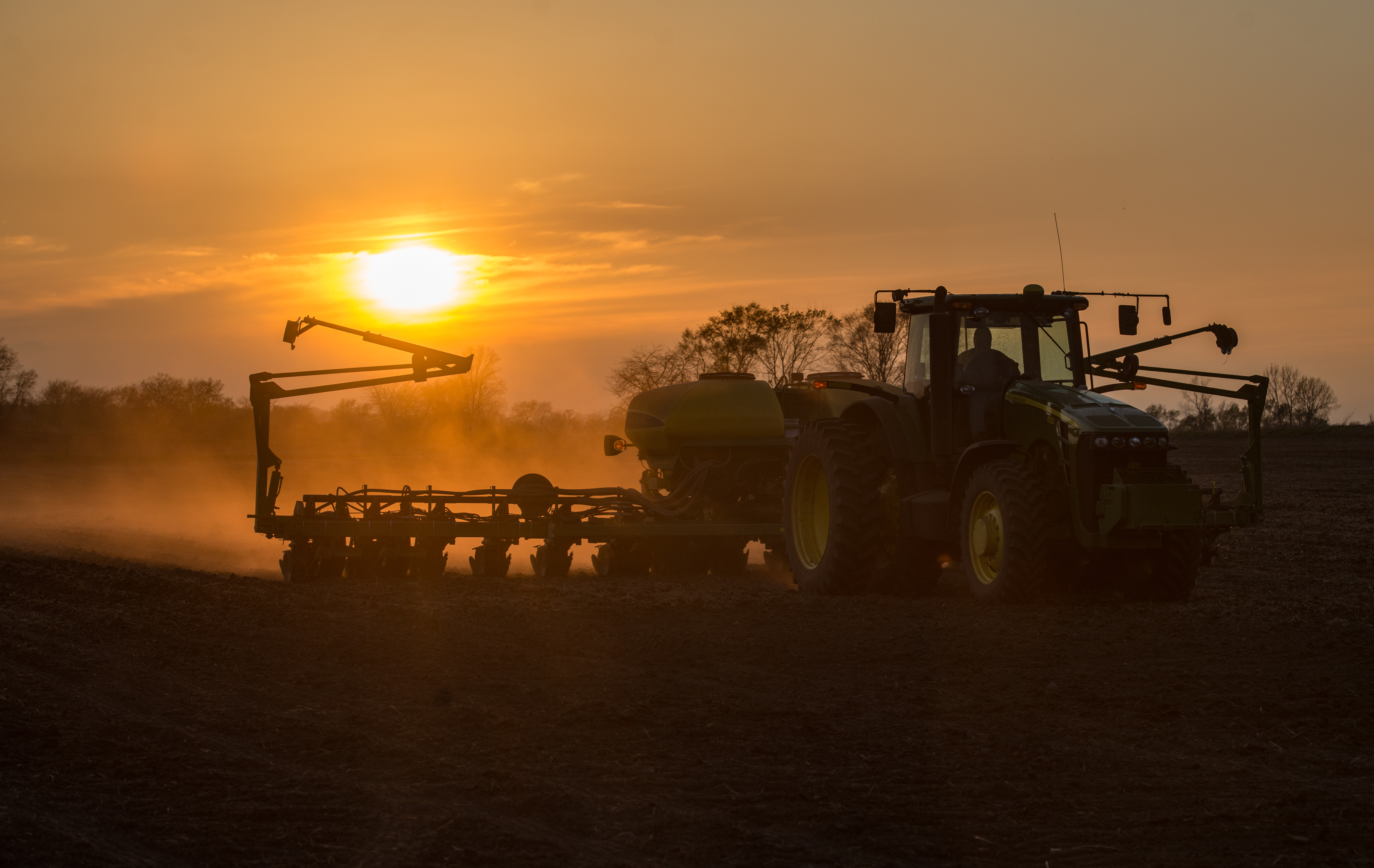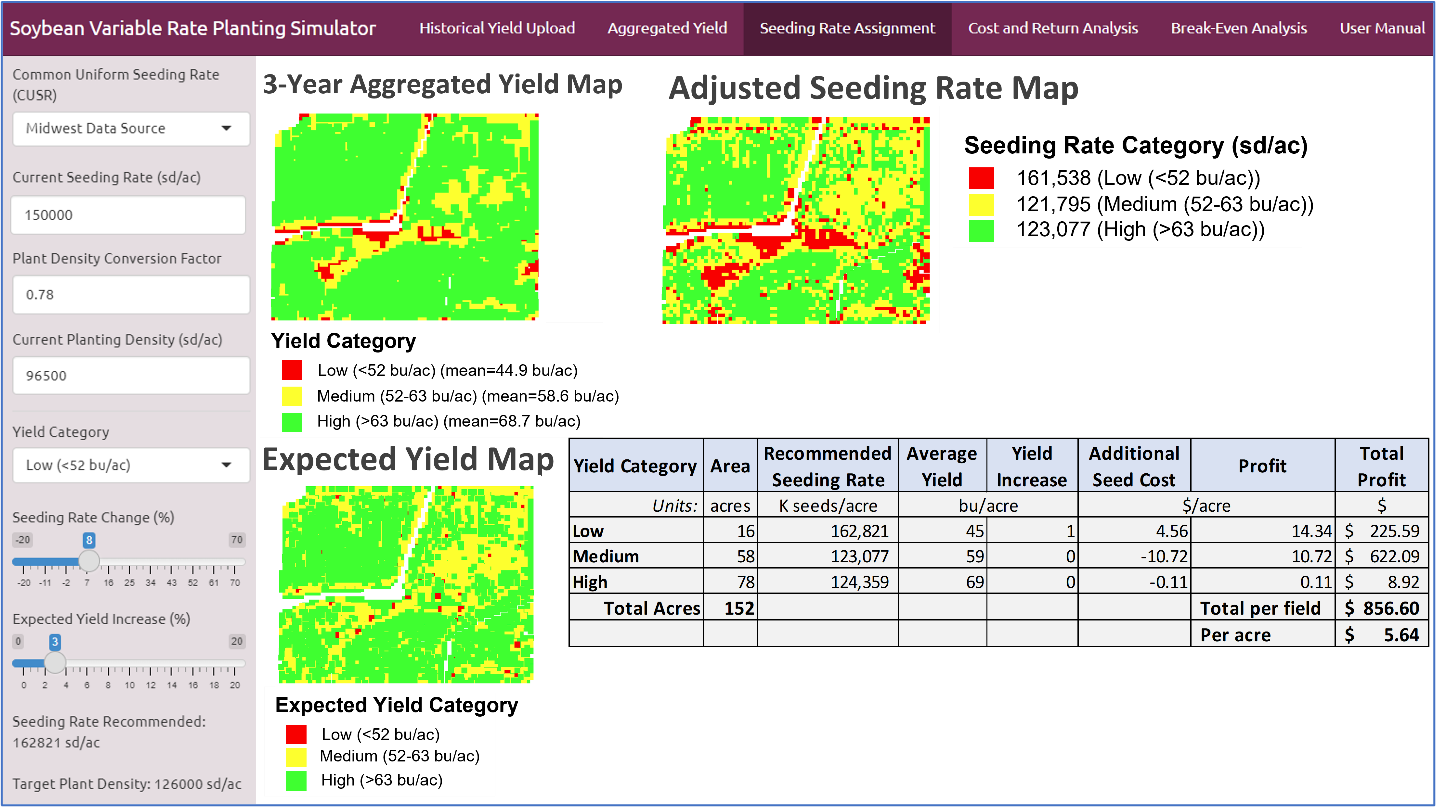
Through updates on ISA's Soybean Rate Variable Simulator, farmers can demonstrate variable rate soybean seeding prescriptions based on within-field yield environments. (Photo credit: Joclyn Bushman/Iowa Soybean Association)
Updates to the ISA Soybean Variable Rate Seeding Simulator
May 19, 2022 | Kriss Nelson
Soybean seed costs will continue to increase over time, affecting the price of soybean production. Recent studies demonstrate the potential benefits of changing soybean seeding rates but translating this knowledge into practice can be difficult. To help make these management decisions, the Iowa Soybean Association (ISA) has upgraded the Soybean Variable Rate Seeding Simulator.
“The upgraded Soybean Variable Rate Seeding Simulator is an example of a new generation of ISA online tools that will enable farmers to submit their data for on-the-fly processing without their data being saved outside the farmer’s computer,” says Peter Kyveryga, ISA senior research scientist of analytics.
The online simulator processes three years of a farmer’s historical spatial yield maps. It evaluates different variable rate soybean seeding prescriptions based on within-field yield environments.
The simulator caught the attention of the Kansas State University (KSU) Department of Agronomy. KSU Agronomy Professor Dr. Ignacio Ciampitti and his lab team members, including Carlos Hernandez, research scholar in digital agriculture and spatial data science and Dr. Adrian Correndo, fellow post-doc, digital agronomy at KSU contributed by providing critical feedback and new developments to improve the tool. This included providing foundational data from past publications for on-farm soybean seeding rate trials conducted across the Midwest, including Iowa.
The upgraded Soybean Variable Rate Seeding Simulator’s new utilities include:
- The option to predict potential yield increase and seeding rate change for various yield environments (low, medium, high, or low or high stable and unstable) based on hundreds of on-farm trials across the Midwest.
- An example or demo dataset is preloaded in the online version so a user can explore how the tool works and how to use it.
- The ability to export the variable rate seeding prescription as a shapefile used on a tractor or other implement’s monitor. This upgrade was made per a request from a northeast Iowa producer. *Note that for data privacy preservation: if you download the example data’s seeding rate prescription, be prepared to see that coordinates have been modified (geomasked) to be located somewhere in the middle of Lake Michigan.
- To handle all yield maps, including AgLeader SMS and MyJohnDeere systems.
- The ability for user-defined realistic plant survival rate to estimate plant stand count based on seeding rate. Lower plant survival rates create a higher potential of lost profit when not seeding at the optimal seeding rate for specific yield environments. This is often the root of the problem in some soybean systems.
- More convenient for farmers is the ability to enter seed cost per bag rather than the original version, which was per acre units (estimating 140,000 seeds per bag). The tool then converts this into a per-acre cost.

The example above shows the tool’s economic evaluation of variable rate seeding prescription for a farmer field from Jasper County. The farmer usually plants 150,000 seeds per acre with a plant survival rate of 78%. The tool indicates with a soybean price of $14 an acre, a seed cost of $57 per bag, increasing seeding rate in the low yield area to 162,821 seeds per acre, reducing in the medium to 123,077 seeds per acre, and reducing in the high yielding areas to 124,077 seeds per acre, may produce a total return of $556 per field or $5.40 per acre. The largest potential return of $622 is estimated in the medium yield areas due to reducing the extra cost for additional seeds.
“ISA’s unique set of decision-support tools are continually being upgraded and improved. For the Soybean Variable Rate Seeding Simulator, our future versions will allow users to use more, or less, than the current three years of yield data to build a variable rate seeding prescription,” says Aaron Prestholt, ISA data analyst. “The future versions will also add a validation feature so farmers can compare their yield results to the expected yield results after applying the variable-rate seeding recommendation output by the simulator.”
Back